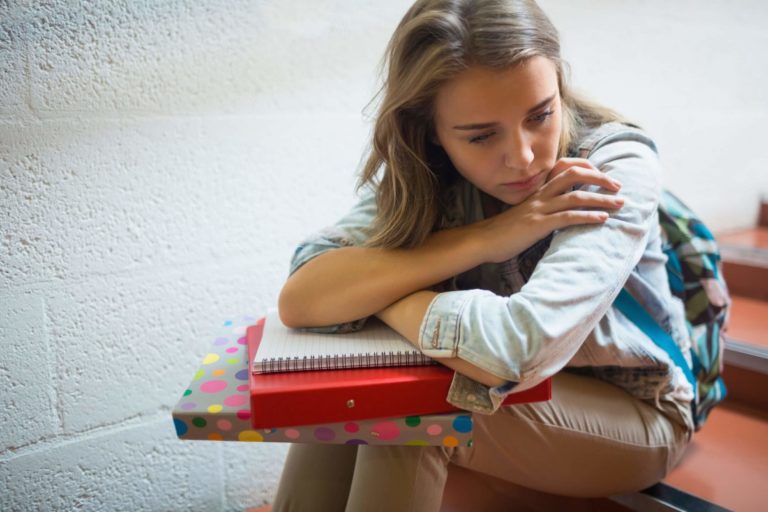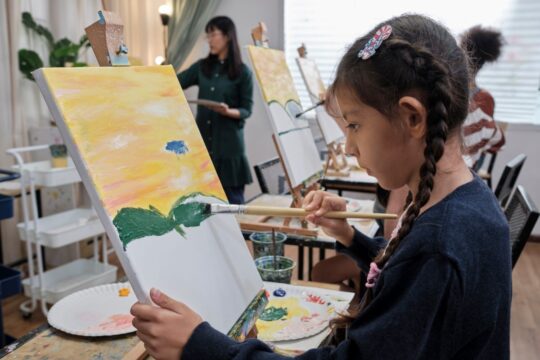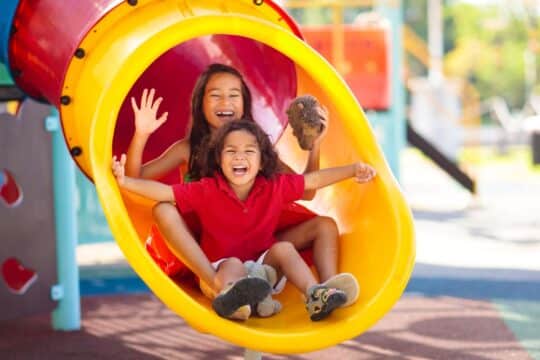Students come to us in all shapes and sizes, with all different abilities and challenges, and it is our job to both identify and meet those various needs. But what if those “needs” aren’t measured on a formal assessment, or addressed through your district or state learning standards? In education and in society, we are learning more every day about the depths of trauma’s impact on our learners and know that if trauma is present for a child, learning may not be as easy. Creating a trauma-informed classroom environment is your best bet to both being able to identify trauma within students and support them with it.
Types of Trauma
Trauma can be defined as “an exceptional experience in which powerful and dangerous events overwhelm a person’s capacity to cope” (Rice & Groves, 2005). Critical to this definition is understanding that an experience or event may cause one person trauma and not another; it is in fact dependent on the personal reaction and response to that event. For example, the passing of a pet may be highly traumatic for one person while for another may be sad but manageable.
Traumatic experiences range based on a person’s age, previous experiences, and coping techniques developed. A relatively new tool to measure trauma calls these experiences “Adverse Childhood Experiences” (ACEs) and this list includes a range of experiences from a parent’s divorce to unmet biological needs, and beyond. Research from the CDC suggests that by age four, one-fourth of the population has had at least one “ACE”, and having four or more ACEs starts to correlate with health issues (Souers with Hall, 2016). Trauma can occur at any stage in life, and is ultimately an attack on a person’s sense of safety.
How To Recognize it in the Classroom
Students coping with traumatic life experiences present in various ways, but there are some common signs that you may be familiar with already. Most common is “fight or flight”, where a student may respond to a classroom demand, like putting their chair up or completing a task independently, with a maladaptive response.
“Fight” responses may look like verbal outbursts, property destruction, physical aggression, or refusal to complete the demand in some way. “Flight” responses will look like a student leaving the learning area, “turtling” into themselves and their space, or avoiding a task by doing something completely different and unrelated to the expectation set by the teacher. “Freeze” is a third response in the same vein, and will look like a child unable to engage, communicate, or move forward.
Signs that you have a student with trauma include clingy or isolating behavior, passive/quiet behavior, frequent somatic symptoms like tummy aches, headaches, or fevers, regressive behaviors like bedwetting or baby talk, or aggressive and/or mean behaviors. As you can see, knowing one child with trauma does not mean you know them all, and it is important to expect that what you did for one child with trauma may not work for another.
How it Impacts Students
To understand trauma, it’s critically important to have a basic understanding of brain science and development. In a nutshell, the human brain is typically born with the “safety” part of our brains already developed for survival. As a baby is cared for and basic needs are met, the brain is able to expand and develop emotional connection. When a baby or toddler develops these sustained emotional relationships with close family members and caregivers, the pre-frontal cortex is able to begin learning and acquiring skills.
Early trauma related to basic needs not being met requires the brain to stay in the “survival” stage of development, also strengthening those neurons which in turn strengthens the “fight or flight” response, hence why you will see students with trauma quickly resort to that response rather than a more adaptive one. In a way, those survival skills are constantly “taking the wheel” of the student’s body in times of challenge, rather than allowing the student to let more adaptive strategies likely taught right within your classroom lead the way.
Trauma can cause physical brain changes, lower emotional control, impacts on learning ability, and less behavioral control. Constantly responding with survival mechanisms described above can have very challenging and restrictive outcomes for our growing students. In the obvious sense, they prohibit the student from engaging in the rich learning tasks you as the teacher provide. In the less obvious sense, they also make it challenging for students to form trusting, meaningful connections with both adults and peers in their life. This can be detrimental to their growth as they are then less likely to find a peer group with whom they play, learn, and grow with, while also not meeting grade-level learning expectations. Long-term, we all know these paths can lead students to less desirable outcomes like dropping out of school, unemployment, substance abuse, and, as noted before, significant health impairments.
Trauma-Informed Teaching Strategies that Work
More than likely, you chose the teaching profession because you love connecting and forming relationships with children. If so, you are already well on your way to having a trauma-informed teaching environment. There are two must-dos to begin addressing trauma: (1) Keep a constant lens on basic needs and (2) create a classroom with routines and personal connection.
First, staying constantly aware of a learner’s needs for sleep, food, water, and exercise will better your chances for engaging students with trauma (and all students!). Considering these needs first when a student is acting out will likely address many challenging situations with students, even if these physical needs are not obvious in the moment. Water breaks, brain breaks, encouraging snacking and lunchtime eating, as well as checking in on breakfast status are all easy to employ.
Second, establishing routines that build connection are critical to students creating trusting relationships with adults and peers that assist in overcoming traumatic responses. Morning meeting, positive reward/acknowledgement systems, and journal writing or private conference routines are all ways to build in emotional connection so that students can tap into the part of their brain that accesses learning. A responsive classroom is one of the best approaches to embedding both emotional connection and clear routines into an elementary age classroom. Priming expectations, verbalizing your efforts to promote safety in a classroom, and creating predictability in a child’s day through schedules and common routines are three must-dos to combat trauma and reduce the fight or flight response.
As you work tirelessly to create safety and connection, cultivating a trauma-informed classroom, it is also important to spend time caring for yourself. Vicarious trauma can occur for caregivers responsible for supporting people with trauma, and thus it is important to both recognize the emotions and provide yourself with supports for managing stress and potentially trauma in order to serve your students as best you can.




